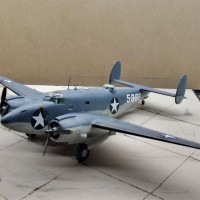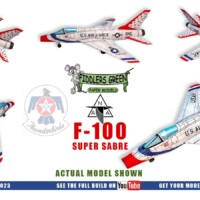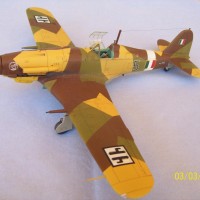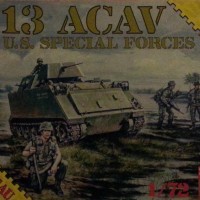Review: Italeri 1/12 Lancia Stratos
Some history
The Lancia Stratos HF (Tipo 829), known as Lancia Stratos, is a rear mid-engined sports car designed for rallying, made by Italian car manufacturer Lancia. It was highly successful in competition, winning the World Rally Championship in 1974, 1975 and 1976; as well as winning the 1974 Targa Florio,winning the Tour de France Automobile five times and the Giro d'Italia automobilistico three times.
(From Wikipedia)
The kit (unboxing)
I will start by saying that my personal opinion is that this particular kit is one of the so-called kits of the year, not only in the category of cars in this scale but speaking more generally.
I could also easily characterize it as "slightly" controversial, at least based on my sample. I will explain why as we go along, let's start slowly by looking at and explaining what we have in our hands.
Externally, the first impressions are completely positive, with the box stealing the show, being large (433112 cm) and sturdy. The image of the car is of good quality and the information it gives to the prospective buyer is sufficient and clear to convince him.
Opening the box, we see two "compartments". In one we will find the smaller frames with the transparent pieces, the chrome ones, the body, the photo-etched ones and the accessories such as springs, screws, tubes and fabric tape.
Everything is enclosed in nylon bags per frame and, somewhere here come my first observations: Although the bags are sealed, one of the headlight pieces is missing from the frame of the transparent pieces, while the frame of the chrome ones is slightly crooked, as if it was put in the package hot, pressed and since it was soft, it bent. Fortunately, the pieces do not seem to have a problem, but this will be seen in the construction. By the way, I have already sent a message to Italeri regarding the missing piece, I will keep you informed about the company's reaction.
There are two documents that come with the kit, the building instructions and the painting instructions (in case someone prefers to paint it instead of using the decals).
The paint-decal instructions are clear and unambiguous and leave no "dark" spots, all good here.
And we come to the construction instructions: While the construction sequence and the numbering of the parts are as they should be, the painting instructions are absent in most stages! The entire chassis, engine, suspensions and brakes (from what I have already checked) have no clear indication of how exactly they should be painted, leaving the modeler to refer to literature, the internet or to guess and decide for himself what colors to paint all of these with.
It's as if someone was in a hurry to print the instructions, an impression that is reinforced by some spelling errors (e.g. send instead of sand) with the risk of causing damage due to misinterpretation.
Finally, there is a small corrective leaflet regarding the construction stage of the engine air ducts.
The two large (almost A4) sheets of decals are from Cartograph, printed with the well-known quality of this particular company, crystal clear and precise, offering everything necessary to "dress" the participation in the 1977 Monte Carlo Rally. The colors are correct and vivid, the film is thin and there is nothing left that could spoil the final result.
Let's go deeper now to see what else is there. The photo-etched ones are made by Fotomeccanica and that's good, since it's one of the leading and large companies dedicated to this type. And indeed, the sheet metal is cleanly cut-etched and gives a little less than 80 components in all sizes. From a few millimeters to several centimeters. Buckles for seat belts, lockers for the engine covers and front, radiator grilles, chassis floor protectors and various trifles here and there are offered.
Along with the photo-etched parts, a piece of transparent rubber measuring 8*5 centimeters is also offered from which the rear wheel mudguards are made.
Let's move on. The main body comes in three sections, just like the real car, while the chassis follows the construction philosophy of the real one with the floor divided into a central, rear and front section.
The central part of the chassis, on which everything is essentially supported, is cleanly cut in black plastic, quite durable and with all the necessary details (screws, metal ribs, etc.) clearly visible. The only dissonance are some mold pins under the bottom .
The first nine stages of construction deal with the assembly of the frame and part of the front suspension and, if we exclude the annoying lack of painting instructions, otherwise everything seems to be correct and detailed. The plastic is of good quality, the molding is clean without any excess and each piece seems to have been carefully designed and placed in its place. The overall quality is at a high level, if not reaching those of, for example, MENG, but it is quite reminiscent of Tamiya, even of the previous generation.
The engine requires no less than four stages of construction to complete and is a model in itself. Detailed and satisfying, cleverly designed to require minimal sanding or priming, it comes with all its accessories and is "adorned" with lifelike cables and realistic piping in either plastic or flexible material.
The front and rear suspension and brakes are also realistic miniatures of the real ones, both in terms of their construction and in terms of their detail, while they have -of course- the ability to function like the real ones thanks to the moving joints and the "shock absorbers" with real metal springs.
The interior of the cabin is as one would expect it to be in a racing car: simple and functional, with bucket seats, four-point seat belts made of nice red fabric, photo-etched metal parts and Britax logos in decals, numerous switches on the instrument panel, a fire extinguisher at the passenger's feet, a reinforced floor, etc. The instrument panel is impressive with the main instruments in the form of a hole and the internal indications in beautiful decals followed by their transparent covers and numerous switches (at least 13) in various positions mainly in front of the passenger, along with an aircraft-type fuse box (open, in front of the right seat).
The cockpit is completed with a fine steering wheel with switches integrated into the column. One disagreement I have here has to do with the signs of the molding on the ceiling of the interior, with its "volumeless" representation and with the lack of a roll bar, the cage protecting the crew in case of an accident. I think that this lack is rather serious here, unless it was not evident in the real vehicle but in the upholstery. I am saving for the future and after carefully studying the photos of the interior.
The entire construction is completed with the gradual installation of the body, after of course installing the lights, mudguards, fenders , radiator grilles and of course the doors which, needless to say, have the ability to open and close normally, as do the engine and front covers.
The vehicle stands on its feet on four tires (which I forgot to mention at the beginning) made of nice soft material (vinyl?) exact copies of the Pirelli Cinturato P7, two in size 295/35 VR15 and three (one is the spare) in size 205/50 VR15.
The engraving of their treads is realistic and accurate, while the wheels are nice and well-made in two pieces each, with nice imitation of their bolts and air valves, and are given in yellow plastic in case someone gets tired of painting them.
Finally, the chrome parts look good quality with realistic scale - not "fake" mirror-like - chrome. This means that they probably won't need to be stripped and repainted, and the fact that they're all mounted on the frame suggests they won't be compromised during the manufacturing process. The clear parts are fairly clean and sturdy, although I have a small quibble about the rear cabin glass. Maybe if it was cut from our own clear plastic it would be better... Otherwise, everything is there, even the side indicators, all in very good quality.
Lastly, I will mention the nice red fabric for the belts, the suspension springs, the semi-transparent fuel hose, as well as the three types of black flexible hose and cable, as well as the metal wire that is provided for the engine, brakes, etc. Of course, I will not omit the screws and nuts, although an appropriate screwdriver and wrench would be appreciated.
Conclusion
So, having taken a first look at the contents of this particular box, what do I have to point out?
First of all, this is definitely a satisfying kit, both in terms of quantity and size. It was definitely a model that was missing from the market and Italeri did very wisely with this release.
Now, as for the individual issues of the kit, such as the overall "made in Italy" quality (not always the best) , the image of the rushed release (see crooked chrome frame, errors and omissions in the instructions, at least one piece missing) show that the company was probably in a hurry, obviously to catch the Christmas holidays, but having also done a pretty good job on the main subject.
Indeed, this is a good kit in every way, which presents a legendary car of the '80s without leaving anything out.
Now, if your hands are catching and you want something more, there is definitely enough room to scratch build .
There are of course also the after market companies which I suspect will find a bright field of glory in this particular kit.
Time will tell as usual . A kit for everyone, even for those who are not very advanced, but not for complete beginners, who nevertheless declare themselves lovers of classic racing cars .
Highly recommended .
























First, Michael, thank you for taking the time and trouble in writing this review, it’s a kit I’ve been waiting for with bated breath. You’ve given us a very good description of what does and what doesn’t come in the box. You haven’t mentioned the price or whether you think it’s good value for money, I have seen a couple of negative comments regarding this. I’ll have to wait until the kit hits the Chinese market before making a final decision, but you’ve certainly whetted my appetite, thank you again.
George (@chinesegeorge) , I am glad that even in my way I helped you have a better idea about this particular kit. As for the price, yes, you are right, I did fail to mention it. Its price in Greece is currently 210.00€. To give you an idea, Tamiya kits in the same scale (e.g. the Tyrrell that I recently built) are sold at 110.00 - 120.00€, while the MENG Mc Laren is at 220.00€.
If you consider that this is a new kit, so Italeri has made a serious investment in it hoping to make a profit as soon as possible, the time that has passed since the release of the MENG kit, so its price has stabilized or even decreased, the inflation that is driving prices up worldwide if I am not mistaken, but also the fact that this is an overall and generally good kit, then I would say that its price is rather reasonable at the moment. And yes, I believe that it is worth its money, always keeping in mind everything else I write in the presentation. Maybe I could be even more descriptive or dig deeper e.g. for "clever engineering" or so , but my purpose was really to give an initial first impression and let others decide using their own criteria and sencess until they make their final decision and draw their own conclusions.
Thanks for this very detailed review, Michael!
That's an impressive looking kit.
Thanks for sharing your impression on this kit, Michael @faraomike
Pricing in the Netherlands is roughly the same, close to €200
An amazing sexy car. I don't fit in it but I haventried in a street version. Her little sisters in smaller scale are my favorite car models. Thanks for the review.
A small note : Italeri responded positively and sent me the missing part (#F4) in a neat, well-protected envelope.